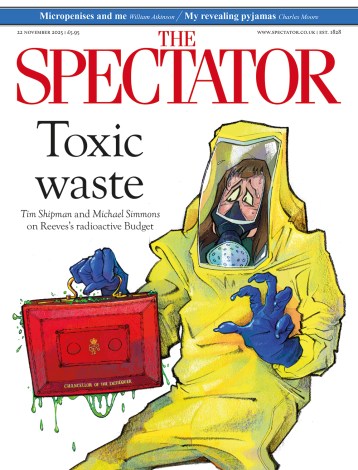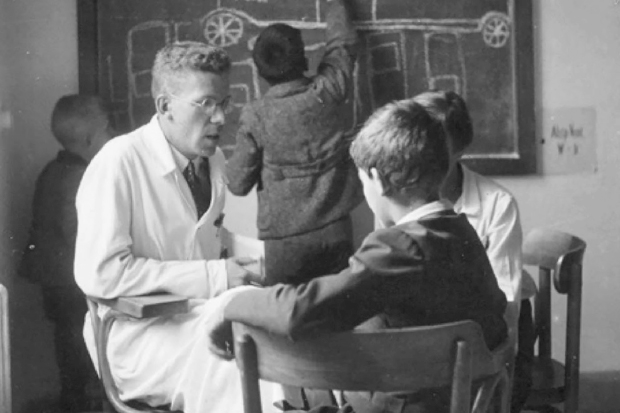Steve Silberman’s stunning new book looks across history, back to Henry Cavendish, the 18th-century natural scientist who discovered hydrogen, Hugo Gernsbach, the early-20th-century inventor and pioneer of amateur ‘wireless’ radio, and countless other technically brilliant but socially awkward, eccentric non-conformists, members of the ‘neurotribe’ we now call the autism spectrum.
He argues passionately for the ‘neurodiversity’ model rather than the medical disease model, for society to stop trying to ‘cure’ or ‘normalise’ those with autism, but to recognise them as neurologically differently wired, to accept difference, and support their disabilities when these surface in certain environments. His book could serve as a manifesto about extending dignity and human rights for people with autism, just as society has now done with other neurotribes such as the deaf, left-handed or gay. It is for society to respond to his challenge.
But who would have thought that a book about the history of the puzzling condition of autism would also contain a story about a doctor working in a clinic under the unimaginably horrific conditions of the Nazi eugenic cleansing policies? Nested within this highly original book is a chapter intriguingly entitled ‘What Sister Viktorine knew’. Sister Viktorine was a nun who worked with the paediatrician Professor Hans Asperger in the Children’s Clinic at the university hospital in Vienna in the 1930s. Today we know Asperger’s name because a syndrome — a part of the autism spectrum — is named after him. Silberman takes us back to Vienna to properly understand Asperger, giving us a rare glimpse into his clinic.
Vienna, once the home of Sigmund Freud, was known for a Jewish community dating back to the 12th century and the music of the Jewish composer-conductor Gustav Mahler, until the Nazis banned it. In the 1920s, more than 200,000 people in Vienna (ten per cent of the population) were Jewish. Twenty years later almost all had been killed or deported. Now zoom in to see Hans Asperger working in the Children’s Clinic in the excellent University of Vienna Hospital. This was no ordinary clinic, and Silberman argues that it was a century ahead of its time. It was created in 1911 by a doctor, Erwin Lazar, who, instead of seeing children with special educational needs as being ‘broken’ or as having an ‘illness’, saw them as needing different teaching methods more suited to their own learning styles.
Lazar’s progressive pedagogy was based on the 19th-century concept of Heilpädagogik, or ‘therapeutic education’, and his special education unit was known as the Heilpädagogische Station. Hans Asperger worked there with Sister Viktorine using art, drama, music, literature and nature study. The antithesis of a custodial institution, it was a place where children and teenagers could discover their potential.
Silberman describes one of the children, Gottfried K, a nine-year-old boy who cried at the smallest change in his routine, was terrified of other children, was socially unaware and socially awkward, took people’s words literally and was teased by his peers mercilessly. He was ‘obsessed’ with rules, laws and schedules. When given an IQ test, asking him to say what a ‘ladder’ and ‘staircase’ had in common, he ‘failed’ by pointing out the differences that to him were far more important. Asperger saw more than 200 children with Gottfried’s profile. Some rocked back and forth or repeated the same phrases over and over. Some lined up their toys in strict patterns and would throw a tantrum if these were disturbed.
Silberman reminds us what was happening in the University of Vienna when Asperger submitted his thesis in 1943: ‘The beautiful city of Vienna had become an abattoir of surreal brutality.’ He isolates some key changes in the Viennese medical scene. The first was eugenics and compulsory sterilisation — ideas the Nazis imported from the US, sponsored by none less than the US National Academy of Sciences, who hosted the Second International Congress of Eugenics in October 1921 in Manhattan, and promoted in journals like Science. In Germany in 1934, 62,400 people with schizophrenia, epilepsy, inherited blindness and other conditions viewed as human imperfections were brought to the newly formed Genetic Health Court and were given forced sterilisations.
Asperger’s former thesis supervisor, Professor Franz Hamburger, and his trusted colleague Dr Erwin Jekelius became ardent Nazi party members. Three weeks after the Anschluss the prestigious University of Vienna Medical School was transformed to conduct research into ‘racial improvement’. A new Dean of Medicine was appointed, who Aryanised the medical school: all faculty members had to produce birth certificates to confirm their Aryan descent and sign a loyalty oath to Hitler. Eighty per cent of the medical faculty was dismissed, since of the 5,000 physicians practising medicine in Vienna at that time, 3,200 were Jews. Many were dragged out into the streets by gangs, brutally humiliated and deported to concentration camps.
It was in this context that Professor Asperger gave the first ever public lecture on autism. On 3 October 1938, in a lecture hall in the University Hospital, he declared: ‘Not everything that steps out of the line, and is “abnormal”, must necessarily be “inferior”.’ To understand quite how brave that statement was, we need to know the political climate. That night was Kol Nidre, the night before Yom Kippur. For the next 24 hours stormtroopers brutalised Jewish neighbourhoods in Vienna. A month later, Kristallnacht occurred: 95 synagogues in Vienna went up in flames and Jewish homes, hospitals, schools and shops were demolished with sledgehammers.
Silberman then describes the second big change in the Viennese medical scene: compulsory euthanasia, just one step on from compulsory sterilisation, for patients judged to be a burden to society. This took place in Asperger’s very own department. Asperger’s former colleague Jekelius helped the Nazis draft a secret plan to exterminate children who were neurologically different, like Gottfried in Asperger’s clinic. Silberman zeroes in on the first child to be murdered in the name of medicine, a baby called Gerhard Kretschmar declared by his doctors to be an ‘idiot’. Born on 20 February 1939, Gerhard was blind and had learning difficulties, with only one arm and one partial leg, and with seizures. Poor Gerhard was the child Hitler had been waiting for. He authorised his personal physician Dr Karl Brandt to tell the neurologist that if the child was ‘put to sleep’, the Führer would offer legal protection for the doctor. While the neurologist conveniently went on vacation, and the nurses took their coffee break, one of his junior doctors murdered the baby with a lethal injection.
Silberman skilfully paints in the details of how this second ‘monstrous’ change in medical practice in Vienna unfolded. In August 1939, Hitler issued a decree requiring doctors and midwives to report all children born with congenital abnormalities of any kind to the committee. They were also paid for each case they reported. By October 1939, Hitler had created the Aktion T-4 Programme, short for Tiergartenstrasse 4, ironically named after the address of the Charitable Foundation for Curative and Institutional Care in Berlin. The T-4 Programme converted hospitals, clinics and care institutions into factories to murder those carrying the genes for diseases and chronic disabilities. Hitler backdated the order by one month to cover those doctors and nurses who had already started murdering their patients.
The situation, brilliantly described here, was nothing short of Orwellian: medical students were now taught about the euthanasia programme and T-4. People with disabilities were referred to as ‘refractory therapy cases’, euthanasia laws were know as ‘negative population policies’ and killing was called delivering ‘final medical assistance’. Clinics for killing children with disabilities were called Kinderfachabteilungen, or ‘specialist children’s wards’. Silberman reveals that Jekelius murdered 789 children in the Am Spiegelgrund Children’s Clinic on the other side of Vienna, most of whom had what today we would call autism, but in those days was described as a being
feeble-minded, or having epilepsy or schizophrenia. The hundreds of children’s brains harvested during the programme were stored in the cellar of the Children’s Clinic and used for medical research well after the war. Altogether, more than 200,000 disabled children and adults were murdered during the T-4 and child euthanasia programmes. Crematoria were built next to the clinics, hospitals and schools, with conveyor belts to transport the bodies to ovens. It is an extreme understatement to say that it beggars belief.
Asperger coined the term Autistische Psychopathen (autistic psychopathy) or Autismus for short to describe the children in his special education unit. In them he saw children with the minds of geniuses, eccentrics, obsessed with their special interests, some with amazing memories who could recall all the routes of the Viennese tramlines, others who could perform rapid arithmetical calculation, and others with profound learning difficulties. When he submitted his thesis describing these children in 1943, he argued that many of them had a natural aptitude for science, for example giving a portrait of a child who was obsessive with performing chemistry experiments at home. He saw them as potential innovators, seeing the world with a fresh perspective, and called them his ‘little professors’. He suggested to his superiors that his ‘little professors’ would make superior code breakers for the Reich. While he recognised how broad the autism spectrum was, he emphasised their special talents, not their ‘degenerate defects’.
Silberman concludes that Asperger was the opposite of a Nazi sympathiser and that, in doing this, he saved these children from almost certain extermination. This conclusion is challenged by Herwig Czech, a lecturer at the Medical University of Vienna and research fellow at the Documentation Center of the Austrian Resistance. He provides important new evidence in John Donvan and Caren Zucker’s remarkable forthcoming book In a Different Key that Asperger participated in sending children to the Am Spiegelgrund clinic, which everyone knew was a killing facility. Silberman’s outstanding book will, at the very least, re-open the debate about what Sister Viktorine knew.






Comments